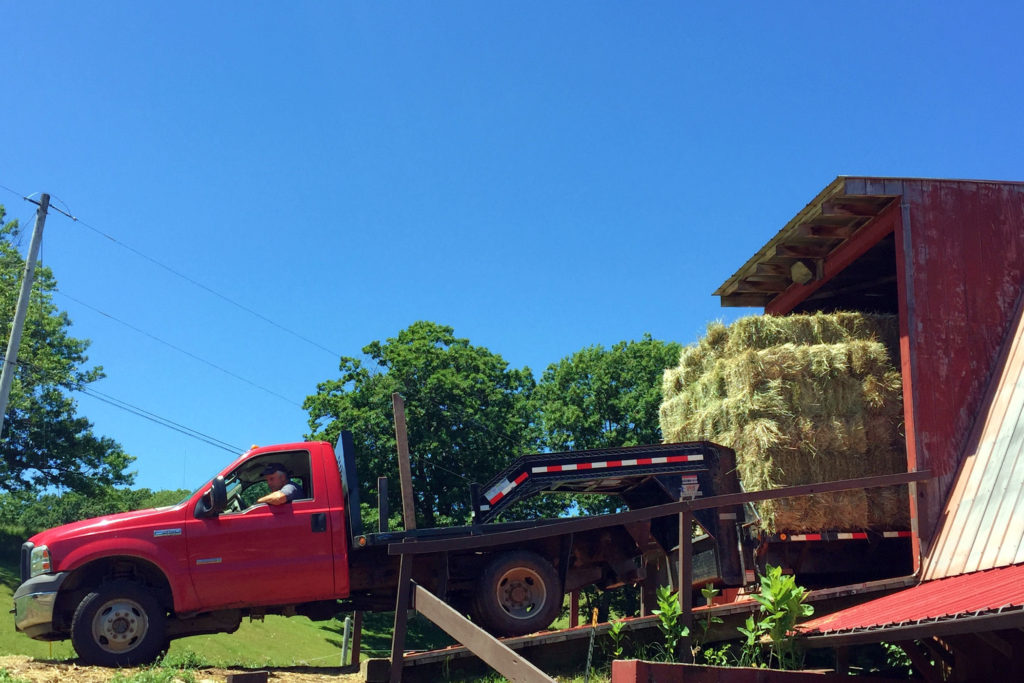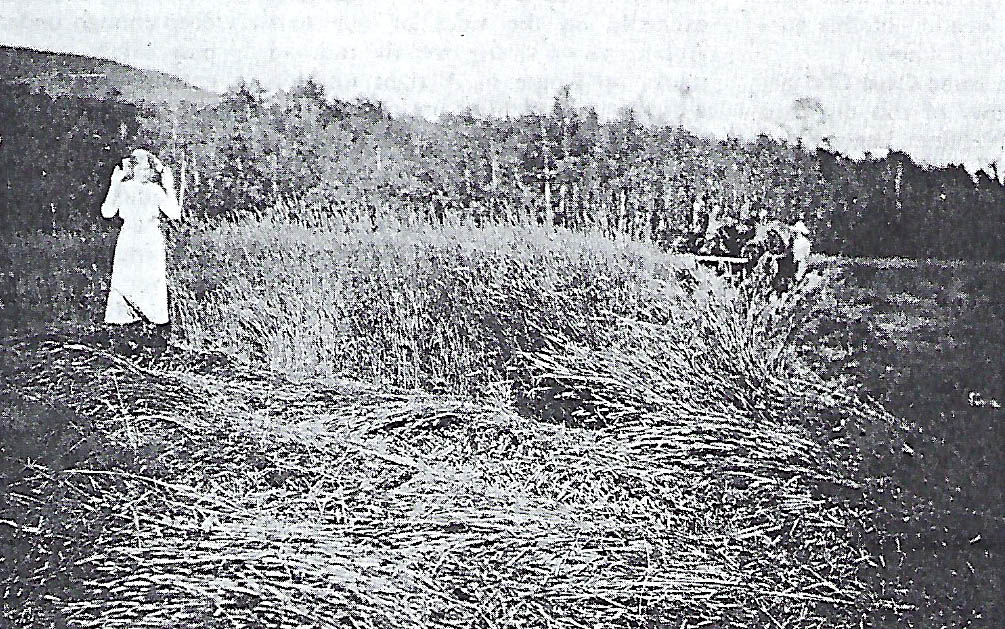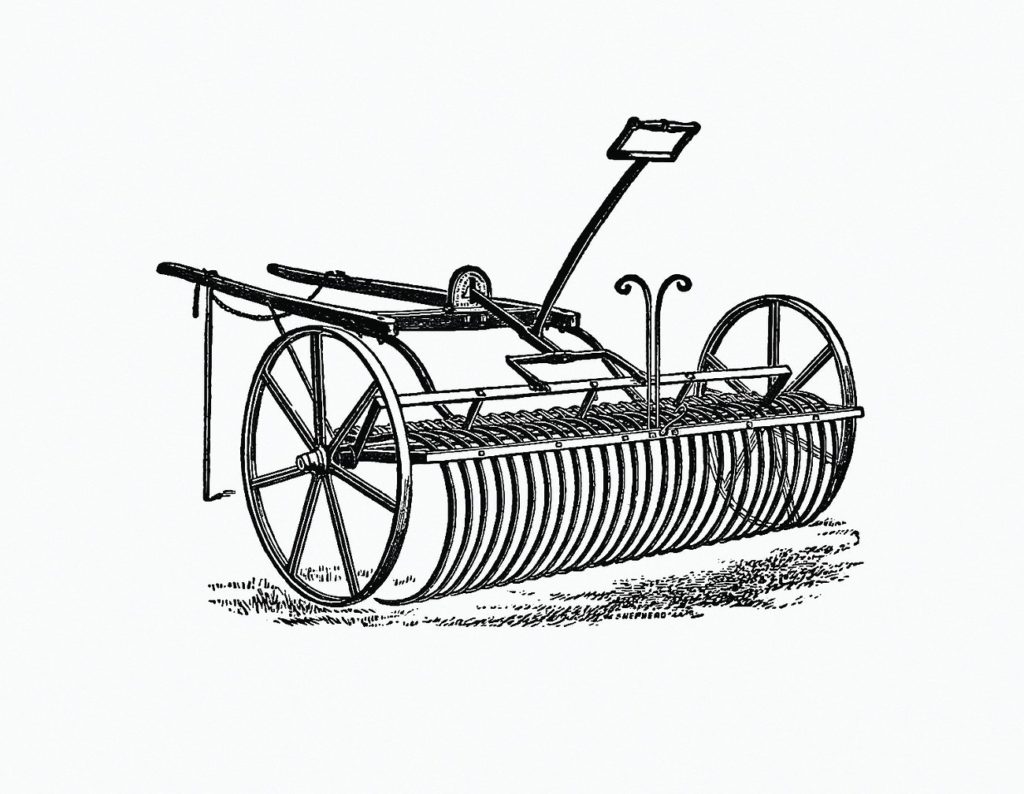History of East Hill Farm: Haying in the Old Days
What a journey the past 74 years have been! From the early days of housing only 30 guests, to our current capacity of 140, we have been fortunate to meet and make many lifelong friends that call East Hill Farm their home away from home. You are truly our extended Farm family!
The Inn at East Hill Farm will be celebrating our 75th Anniversary during the weekend of February 4-6, 2022. As with all celebrations, it is more fun to have your friends and loved ones to celebrate with. Please mark your calendars and consider joining us for this momentous occasion!
We will be sharing photos, behind the scenes, and fun stories in a series of monthly blog, Instagram, and Facebook posts leading up to the celebration. While the Inn’s history dates to 1772, we are focusing on what it has been since right after WWII, an agritourism destination.

Have you ever seen the hay truck that delivers hay to East Hill Farm during the summer months? Or seen the hayloft when it is full? You probably haven’t ever given much thought to hay, but it plays a vital role in the well-being of our animals. In the beginning of summer, we receive “first cut” hay; but as summer progresses, we get “second cut” hay. The major difference in the cut is the amount of nutrients in the hay. First cut can be fed to all our farm animals, but since second cut is richer and loaded with more nutrients, it is reserved for baby animals and their moms, and any animal that might need to have a little more added to their diet.
Do you have a guess how many hay bales we need to get us through the winter and spring? This year, we will receive a total of 3,200 bales of hay that will feed our animals. We also get an additional 14 round bales (those big white marshmallow looking things) that are fed to the cows only. The average round bale weighs 1,250 pounds and each two string square bale weighs approximately 50 pounds. Today, machines do the bulk of the haying work; but in the very early years of the property that was to become East Hill Farm, the work was done by hand.
Read on for a story from Grandpa Jim Whitcomb, published in the New England Homestead Magazine from August 1969, “Haying in the Old Days”.
Some time ago, I heard some young men talking about what hard work haying on the farm was, and it made me think of hearing my dad talking about haying when he started farming in 1867. Also, what it was like in my young days.
There was about thirty-five acres of mowing land on our farm, and Dad mowed it all by hand the first two summers. Used to get up at daylight and start mowing.
Mother and Grandmother milked the three cows and took care of the one horse and did what other farm chores there might be. And Dad came in from mowing at seven o’clock for breakfast, and then went back and mowed until about eleven o’clock. Mother and Grandmother would go out as soon as the dew was off the grass and shake out the hay Dad had cut so it would dry. If they hadn’t finished when Dad stopped mowing, he would finish while Mother and Grandmother got dinner.

After dinner, when the hay was dry enough, they would all start raking, and when it was dry enough to put in the barn, all he had to haul the hay in was a pair of front wheels of an old wagon with two long poles fastened to the axle about four feet apart, and a few boards nailed across the poles and a couple of stakes on the back end of the poles. They would pile hay on the two poles and the one horse he had pulled it to the barn. Wonder how many twenty-year old fellows would do that today?
After two years, Dad and one of the other farmers bought a mowing machine, but you couldn’t raise the cutter bar. If you came to a big stone, you had to turn out and go around it. Sometimes, if there were quite a few stones one man would follow along walking in back of the cutter bar, and when they came to a stone the man riding the machine would throw it out of gear and the other man would take hold of the end of the cutter bar and lift it over the stone. By the time I came along and was old enough to help hay, the modern two-horse mowing machine had come out, and the horse rake, but all the other work was done by hand.
When the hay was heavy and needed turning, if you knew how to handle a hand rake by catching the heads of the hay you could turn it quite fast. Many a field I have helped turn that way, but when Dad bought a tedder, we sure thought that was something!

When it came to getting the hay in, it all had to be pitched by hand onto the wagon and a good man on the wagon could build a big load. Then, when the load was in the barn, it all had to be pitched off by hand and that was hot work, but not as hot as it was for the boy who was packing it down under the eaves, and a lot of the time I was that boy!
After the load, raking in the field was a boy’s job too. For that, there was what was called a bull rake. Don’t think many young people today know what a bull rake looked like. The head of it was about four feet long with wooden teeth about ten or twelve inches long fastened to it about two inches apart, and a handle fastened to it that you could adjust to suit your height. The head and teeth lay flat on the ground, and one pulled it around and raked up the hay the man left that pitched the hay on the wagon. The bull rake was a little tricky to get the hang of at first. If they happened to catch on a stump or a root, they might hit you on the heel. I’ve heard some people say it wouldn’t do it, but they never tried to pull a bull rake around in a boggy meadow. I know they will kick you in the heel and I have a scar on my right heel today to prove it!
After the summer I was fifteen, I was pretty lucky. That summer Dad was taken sick, and I had to run the mowing machine to finish the last of the haying and I can remember now how I dreaded to do it, but after I got started, I liked it and didn’t have any trouble finishing haying. And the next summer Dad said, “You did a good job running the mowing machine, how would you like to do it this year?” And from that time until I quit farming my job was running the mowing machine. We always had a good pair of horses and I used to like to sit on the machine and watch the grass fall, especially if it was a heavy crop. Thinking of haying reminds me of something that happened one summer.
My dad was one of the squarest men that ever lived. If he sold you anything, it had to be what he said it was. A cord of wood had to be a cord of wood, and a bushel of potatoes was always sure to weigh sixty pounds and a dozen ear of corn was always thirteen, but if anyone played a dirty trick on him, he had a way of remembering it.
Dad and the neighbor on the farm joining our farm, owned some joining wood lots at the foot of Monadnock Mountain. There weren’t any dividing walls or fences between the lots and Starkey cut his wood off. Dad felt sure that Starkey cut over the line, but Starkey said he knew better, and Dad couldn’t prove it without having the line surveyed, so he let it go. But it so happened a few years later they were both haying and there was only a low stone wall between the fields. It looked like a shower coming, and we were all hurrying to get the hay raked up, but instead of a shower it was more like a little cyclone. Anyway, it picked up Starkey’s hay and dropped most of it just over the stone wall on Dad’s field. Starkey came around and said to Dad, “I think I ought to have some of that hay.” Dad said, “Yes, Starkey, and you can take it, but don’t you take a dam spear of mine.” So that was how he got even with Starkey.
I could write a lot more about haying, but I think in the old days was a lot harder work than the young fellows have it today.
For more information on East Hill Farm’s current haying practices, read our previous blog, Make Hay While the Sun Shines
Blog post submitted by Holly LeClair
